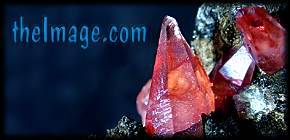
|
|
|||
|
Name: |
tourmaline |
|
|||
|
Class: |
Silicates |
||||
|
Chemistry: |
(Ca,K,Na)(Al,Fe,Li,Mg,Mn)3(Al, Cr,Fe,V)6(BO3)3 Si6O18(O,OH,F)4 Complex Silicate |
||||
|
Color(s): |
black(schorl)(uvite), dravite(brown), pink & red (rubellite), blue (indicolite), green, chrome green, yellow, orange, violet (siberite), multicolored |
||||
|
Hardness: |
7 - 7.5 |
SpecGrav: |
3.0 - 3.3 |
||
|
Fracture: |
conchoidal |
Cleavage: |
none |
||
|
Crystal: |
Hexagonal, short or long prismatic with rounded triangular cross section, striated lengthwise, black varieties sometimes fan like, good terminations on many, flat tops on some |
||||
|
Envronment: |
igneous and metamorphic rocks and veins. Pegmatites,schists, hypothermal veins, hydrothermal replacement deposits. |
||||
|
Association: |
quartz, lepidolite, spodumene, mica, feldspars, topaz, apatite |
||||
|
Locals: |
| Calif., Maine, USA | Brazil | Italy | Germany | Pakistan | USSR | Madagascar | Afghanistan | Tanzania | |
||||
|
Misc: |
The name comes from the Singhalese term "turamali", which was used as a general description for mixtures of gem pebbles from the alluvial deposits of Ceylon (Sri Lanka). Often color zoned by length or from the center out. Tourmaline is pyroelectric (generates electricity with heat), and piezoelectric (generates electricity with pressure). The Dutch called tourmaline, aschentrekker (ash remover), because tourmaline could be heated and it would attract ashes from a pipe. |
||||
|
Photos |
|||||
|
1.) Schorl with Albite, Gilgut, Pakistan |
8.) Mexico |
||||
|
|
|
|
|
|
|
|
|
|